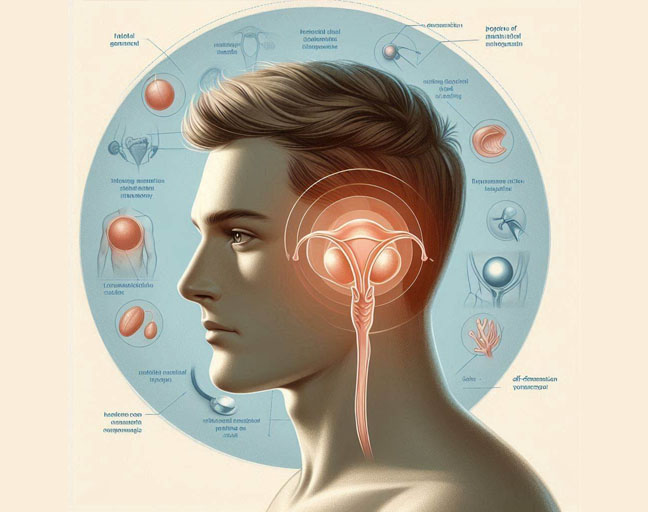Catching testicular cancer early makes a huge difference, and luckily, most cases are detected in the early stages. Often, men might notice some early symptoms, like a lump on the testicle, or notice that it feels swollen or larger than normal. But here’s the thing—sometimes there aren’t any obvious signs until the cancer has grown or spread. That’s why learning how to check for testicular cancer and visiting your doctor for regular check-ups are so important.
How to Check for Testicular Cancer at Home
Doing a self-exam for testicular cancer is quick and easy, and the best time to do it is right after a warm shower when the scrotal skin is nice and relaxed. Here’s what you do:
- Find one testicle in your scrotum.
- Hold it gently but firmly and roll it between your fingers to feel the entire surface.
- Repeat the same process for the other testicle.
There aren’t strict rules about how often to do this, but many doctors recommend a monthly self-exam. And remember, if you feel anything unusual, don’t wait—talk to your doctor right away.
What Are the Signs of Testicular Cancer?
Okay, so you’ve learned how to do the self-exam. But what exactly should you be looking for? The most common sign is a painless lump or swelling in one of the testicles. However, other symptoms can include:
- A feeling of heaviness in the scrotum
- Any noticeable change in the size or shape of a testicle
- A dull ache in your groin, back, or abdomen
- Pain or discomfort in the testicles
Noticing something off? Don’t panic, but don’t delay—get in touch with your doctor as soon as possible.
Symptoms That Might Mean Something Else
Sometimes, symptoms that seem alarming aren’t related to testicular cancer. For example:
- Blood in your semen or urine
- Burning or pain while urinating
- A lump that feels like a “third testicle” or is free-floating
- Skin issues like a rash, ingrown hair, or a pimple
Even though these might not be linked to cancer, it’s still a good idea to see your doctor to figure out what’s going on.
Medical Methods to Diagnose Testicular Cancer
If something seems off during your self-exam, your doctor can use several methods to figure out what’s happening:
1. Physical Exam
Your doctor will ask about your symptoms and medical history, then examine your testicle. They might use a small light to see if a lump lets light pass through, as cancerous lumps are usually solid.
2. Scrotal Ultrasound
This painless procedure uses sound waves to create images of your testicle. It helps determine whether a lump is solid (possibly cancer) or fluid-filled (likely harmless, like a cyst).
3. Blood Tests
Your doctor might check for certain markers in your blood, like LDH, HCG, and AFP. These markers can indicate testicular cancer, though not all cancers produce them, so a clear blood test doesn’t always mean you’re in the clear.
4. Biopsy
A biopsy provides a definitive answer about whether a lump is cancerous. However, due to the risk of spreading cancer, a traditional biopsy isn’t usually done. Instead, your doctor might recommend removing the affected testicle (an orchiectomy) if they strongly suspect cancer.
5. Additional Tests
If there’s a chance the cancer has spread, your doctor may order a CT scan, MRI, or chest X-ray to check areas like your lungs and lymph nodes.
What Happens if You’re Diagnosed with Testicular Cancer?
Hearing the word “cancer” can be scary, but keep in mind that treatment is often highly effective. Here’s what might come next:
Surgery
The most common treatment is a radical inguinal orchiectomy, where the affected testicle is removed through an incision in the groin. If necessary, nearby lymph nodes might also be removed. Surgery alone is often enough for early-stage cancer.
Radiation Therapy
This treatment uses powerful energy beams to kill cancer cells. It’s often used after surgery for a type of testicular cancer called seminoma. Side effects can include fatigue, skin irritation, and, in some cases, infertility.
Chemotherapy
Chemotherapy uses drugs to destroy cancer cells and is often combined with other treatments. Side effects can include nausea, hair loss, and an increased risk of infection, but it’s an effective option, even for advanced cancer.
Final Thoughts
Taking charge of your health is empowering. Regular self-exams, knowing the signs, and getting medical help when needed can make all the difference. If you’re ever unsure or concerned, don’t hesitate to reach out to your doctor. After all, your health is worth it.


Leave a Reply